In the summer of 2010, I went with a group of close students and friends on pilgrimage to Japan. We spent a week at Rinso-in, the original temple of Shunryu Suzuki Roshi, founder of San Francisco Zen Center and of our Zen practice lineage in America. Author of the most widely read of all Zen books, Zen Mind, Beginner’s Mind, Suzuki Roshi was a beloved spiritual master. He was also Mitsu Suzuki’s husband. Her years with him, and all that they brought to her life, certainly fed the silent depths whose waters gave rise to the exquisite poems featured here.
Rinso-in is a relatively small temple in Yaizu, formerly a fishing village, now a port city on the Pacific Ocean. In style and feeling, it is a far cry from the large Japanese Zen training monasteries, famous (if not legendary) for their tough practice. The students and friends I brought—many of whom were Zen priests—had all practiced Zen with me for many years in the United States. I myself have never trained in Japan and do not emphasize Japanese ways in my teaching. But I wanted my closest students to experience the feeling and flavor of the Zen that Suzuki Roshi expressed, the simple life of caring for a temple and its members that he had lived at Rinso-in, and that his son and successor, Hoitsu Suzuki, still lived.
We spent the week sitting in Rinso-in’s small zendo, chanting in its Buddha Hall, cleaning around the temple, and watching Chitose, Hoitsu Roshi’s wife, their son Shungo, who is also a priest, and his wife Kumi, take care of the many tasks necessary to serve a local community of farmers and small-business people. The busy, if also essentially peaceful, life flowed all around us as we foreigners sat zazen, talked, drank tea, cooked our meals, and cleaned around the temple.
Mitsu Suzuki lives with her daughter a fifteen-minute drive from Rinso-in. We phoned to wish her well, not expecting to see her. At ninety-six (her age in 2010) she deserved by now some peace and quiet, and we had been told that she was no longer receiving visitors, especially people from her San Francisco days, because the effort to speak and listen in English was becoming too difficult. But when one of our group who had been a close tea ceremony student spoke to her on the phone, she said she wanted to come to meet us. We were surprised and delighted.
Okusan, as we had been used to calling her, arrived at the temple with a burst of energy. She bustled straight past us into the Buddha Hall, where she immediately made prostrations and said quiet, concentrated prayers, her head bowed, her prayer beads in her hand. She then got up without assistance and, beaming, said loudly in English, “Welcome home!” We were touched by this, thinking she referred to us—that, as students inspired by Suzuki Roshi, his temple was in some way our real home. But later we realized she was saying this to herself—“Welcome home, Mitsu, to the place where your heart is kept.”
We sat for a long while having tea and cookies. She spoke English astonishingly well, as we sat on the tatami floor, she on a little chair, to preserve her knees, she said. She was like a queen holding court, self-contained and dignified, still able to hold her trim, tiny body as she had always done, energetically upright, with elegant hand gestures accompanying her words. She had brought photo albums of Suzuki Roshi in the old days. “Here,” she showed us, “is Suzuki Roshi at the moment of leaving Rinso-in for the last time.” Hoitsu was behind him: the two priests, father and son, were enjoying a private joke long gone by now.
She had also brought a copy of Love Haiku, an anthology edited and translated by Patricia Donegan, in which two of her haiku appeared. Then she recited another haiku in Japanese, which had recently won a prize.
No limit
to kindness—
winter violets.
After a while, when she tired of English, she went on energetically in Japanese, with one of our group translating. When asked how she kept so fit in body and mind, she replied, “I walk around the neighborhood every day for an hour. I make sure to say hello to those who live alone.” She mentioned in particular the school next door for children who “can’t go to school”—she visits them every day, bringing small gifts and good cheer—and the businessmen’s boardinghouse on the other side, where many men come and go, staying only for a day or two.
At the end of her visit, a traditional children’s song about spring bubbled up from her memory. She continued to sing as she strode out of our sight to her waiting car and driver, her crisp white hippari and matching white pants hardly making a sound as she glided away. Her sudden absence left the room somehow sadly empty, though the group of us filled it well enough. For years in America, teaching tea ceremony and Japanese ways was her practice. Now, apparently, it was kindness.
………………………………….
The long life of Mitsu Suzuki (she turned one hundred on April 23, 2014) is an unrepeatable marvel. Spanning the changes and disasters of one of the most spectacular centuries in history—one in which East and West have been struggling to meet and understand one another—the winds of time have blown her back and forth across the ocean. Beneath her sweetness, one senses the stoic toughness she possesses not so much because she was raised to it but because it was required of her.
She was born in Shizuoka City in 1914, at the height of Japanese militarism and competition with the West. Her mother died when she was eleven, leaving Mitsu the woman of the household. At nineteen, dissatisfied with the conventionality and coldness she found in Japanese Buddhism, she converted to Christianity, becoming a member of the local Methodist Church. In 1936, at twenty-two, she married Masaharu Matsuno, a naval pilot. When war broke out in 1937 between China and Japan, Masaharu went off, with Mitsu seven months pregnant. He was killed just two weeks after seeing the first photographs of his daughter.
After the war, Mitsu trained as a schoolteacher, and when her daughter was three, began teaching at a local kindergarten. When the Pacific War began (the war Americans know as World War II) and American pilots began flying their interminable and devastating raids over Japan, Mitsu and the other teachers would take their students into bunkers every day as bombs rained down on the city. On the night of June 16, 1945, just three months before Japan surrendered, the entire city of Shizuoka was burned to the ground.
Mitsu, like almost all Japanese of her generation, had been brought up to believe—and had experienced it as a fact—that Americans wanted to kill her and her countrymen. How strange, marvelous, and probably disturbing then that by the early 1960s she would find herself living in the United States, the new wife of a Soto Zen priest stationed in San Francisco. A working Japanese Christian single mother would not have been able to imagine such a thing in 1940. Yet it happened.
After the war, the schools of Japan were in terrible shape, most of them closed, their facilities destroyed. Civic leaders everywhere rushed to take care of this problem as fast as they could. In Yaizu, Shunryu Suzuki was keen to reopen the historically important kindergarten attached to Rinso-in. He had been told of Mitsu by a mutual friend and was determined to hire her to run the school, though she insisted she would not leave Shizuoka, and that, in any case, how could a Christian woman run a Buddhist school? But Shunryu was extremely persistent. He kept reappearing in Shizuoka again and again to ask Mitsu to simply come visit the school. Finally she agreed. One visit was enough to convince her to take the job. As for the Christian problem? “Well, at least you have some religion,” he told her.
Shunryu visited the school daily, leading the children in chanting and Buddhist lessons. He and Mitsu became close colleagues and friends—two strong, opinionated, and charismatic people, with lively senses of humor. Then tragedy befell the Suzuki family: Shunryu’s wife was killed by a mentally ill priest whom he’d allowed to stay at the temple during one of his absences. He was left with three young children. He needed a wife. The Rinso-in community (including Shunryu’s mother-in-law) quickly agreed that Mitsu was the only possible choice.
The two were married in the fall of 1958. He was fifty-four, she was forty-four. Within the year, he had been invited to become abbot of Sokoji temple in San Francisco, fulfilling his lifelong dream of going to America to teach Zen to Westerners. His short-term appointments to Sokoji kept being renewed, and the longer he remained in America, the more young Western students began to come to practice zazen—not necessarily what the temple members were interested in. Eventually Shunryu turned over Rinso-in to Hoitsu, resigned his post at Sokoji, and threw in his lot entirely with the young Western students. By 1961 Mitsu had come to join him. She remained for thirty-two years— returning home in 1994, twenty-three years after Shunryu’s death. During those years Mitsu Suzuki became—by the account of the many American students who studied tea and, yes, in an informal way, Zen with her—an accomplished spiritual master. She inspired affection and respect and was a second mother to many. In her quiet yet forceful and definite way, she expressed and embodied Zen spirit and continuity with the founder. She continued to live in the small apartment in the temple building, where she taught tea, cooked, cleaned, tended altars, and received guests. She was an anchor. As long as Okusan remained, as long as she went on day by day quietly expressing her life in engagement and sympathy with the community, things would be OK.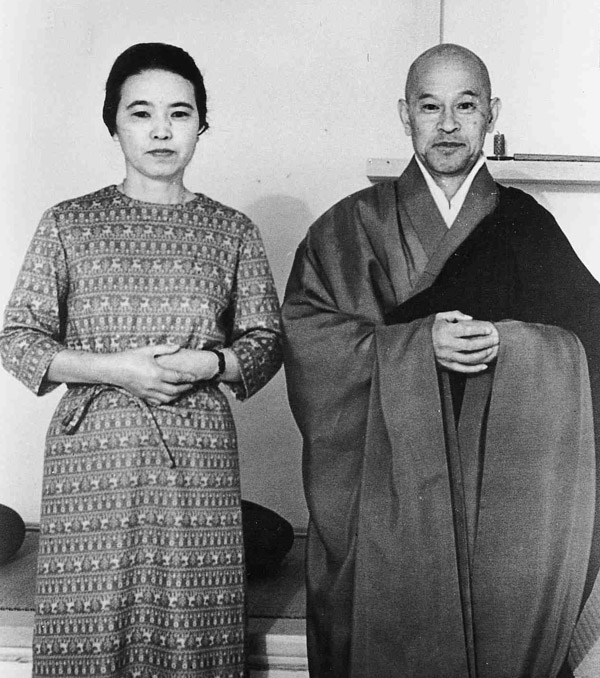
Suzuki Roshi died too soon. Even the most developed students he left behind were young and green, full of idealism and Zen theory and moxie but not enough maturity. They had not lived through the sorts of challenges that Okusan and her husband had experienced during their years in Japan and so had no basis for appreciating Zen as the religion it actually is—a powerful consolation and source of strength in times of suffering and instability. Okusan’s presence expressed this strength and depth during the long years of Zen Center’s rocky coming of age. She held down the fort, shored up the foundations. When that work was done, the maturity of the center established, she went home.
More than anything else, what Okusan taught in America was what Japan lacked after the war and perhaps still lacks—confidence in the depth of the Japanese way as formed by the culture’s long encounter with the Buddhist teachings. Although she had studied tea casually as a child, it wasn’t until she came to America that she began to study in earnest. Her practice of writing haiku also began in America, during the time when Suzuki Roshi first fell ill. How strange then that the powerful expression of her life, her essential Japaneseness—that elusive and almost ineffable feeling that unites tragedy, toughness, delicacy, beauty, and simplicity—was oddly never fully expressed in her until it came out in America, possibly as a way of coping with the strangeness, or maybe the pain, of living so many years among the people who had burned her country nearly to the ground—incomprehensible people, in many ways completely oblivious to who she was and what she had lived through—yet who, at the same time, perhaps understood and appreciated her more than anyone else ever had. Only in America did Mitsu Suzuki finally find and express her Japanese heart.
I bow to my ballpoint pen
and throw it out—
year’s end
Text from A White Tea Bowl: 100 Haiku from 100 Years of Life by Mitsu Suzuki. © 2014 by San Francisco Zen Center. Reprinted with permission of Rodmell Press. Author photo © 2014 by Mitsue Nagase.


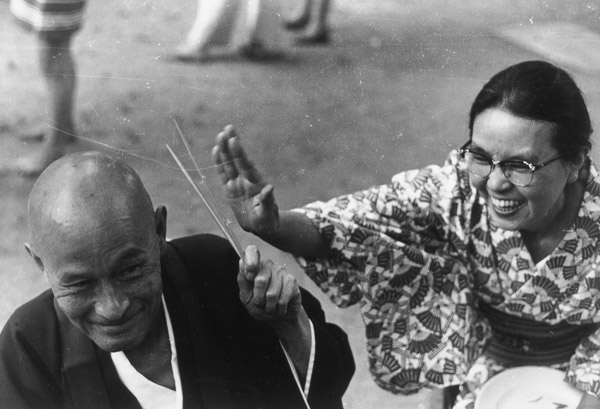
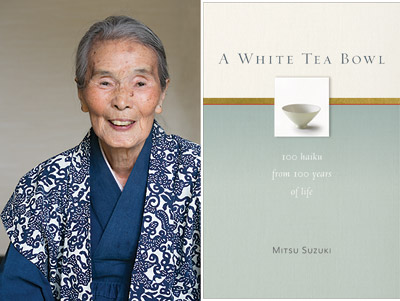
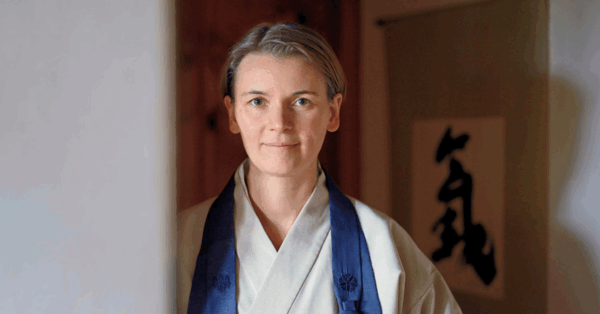
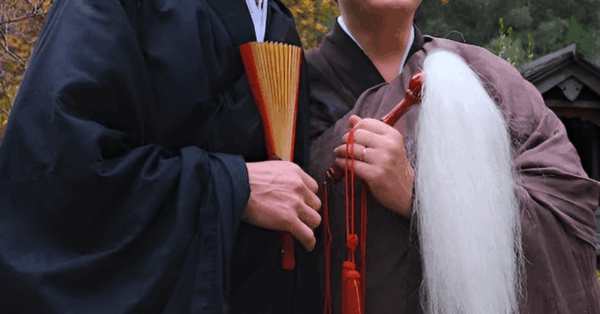
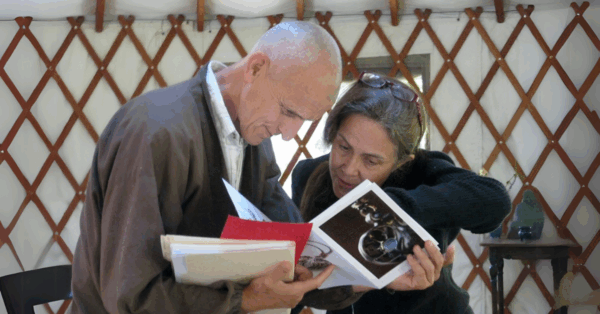
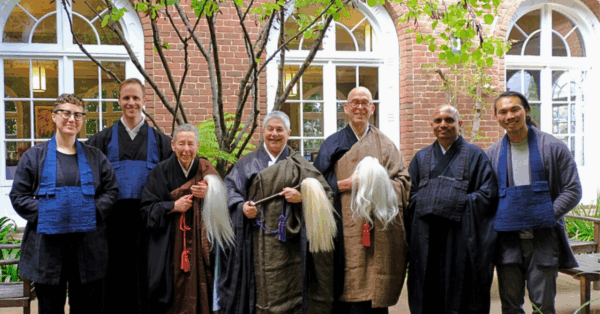
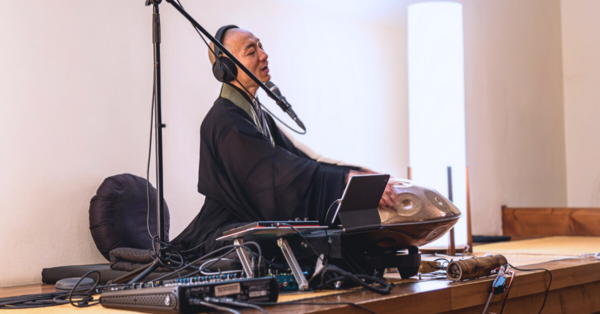
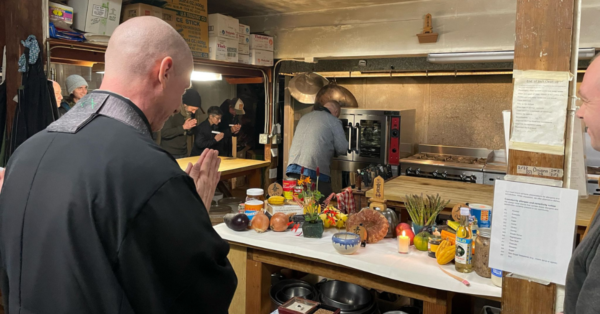
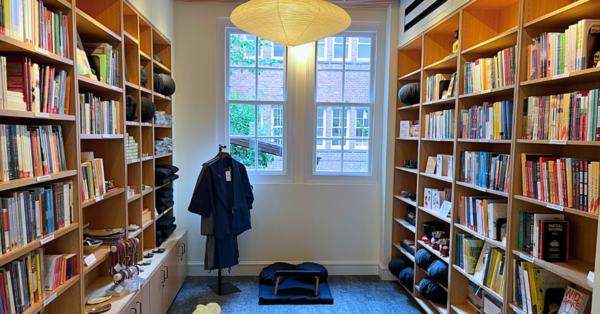

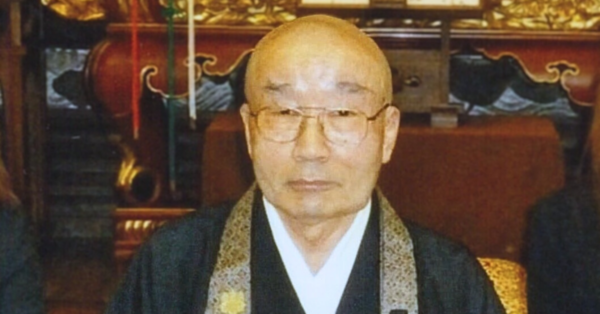
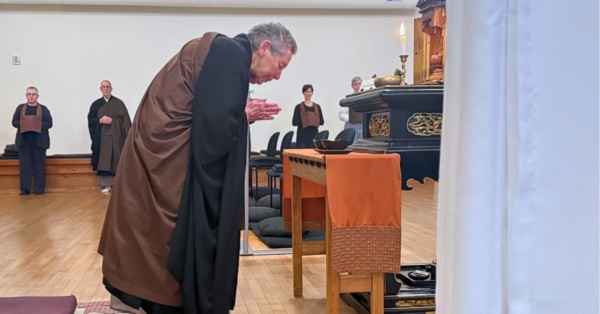
[…] http://memorials.sfzc.org/2016/02/16/norman-fischer-remembers-okusan/ […]